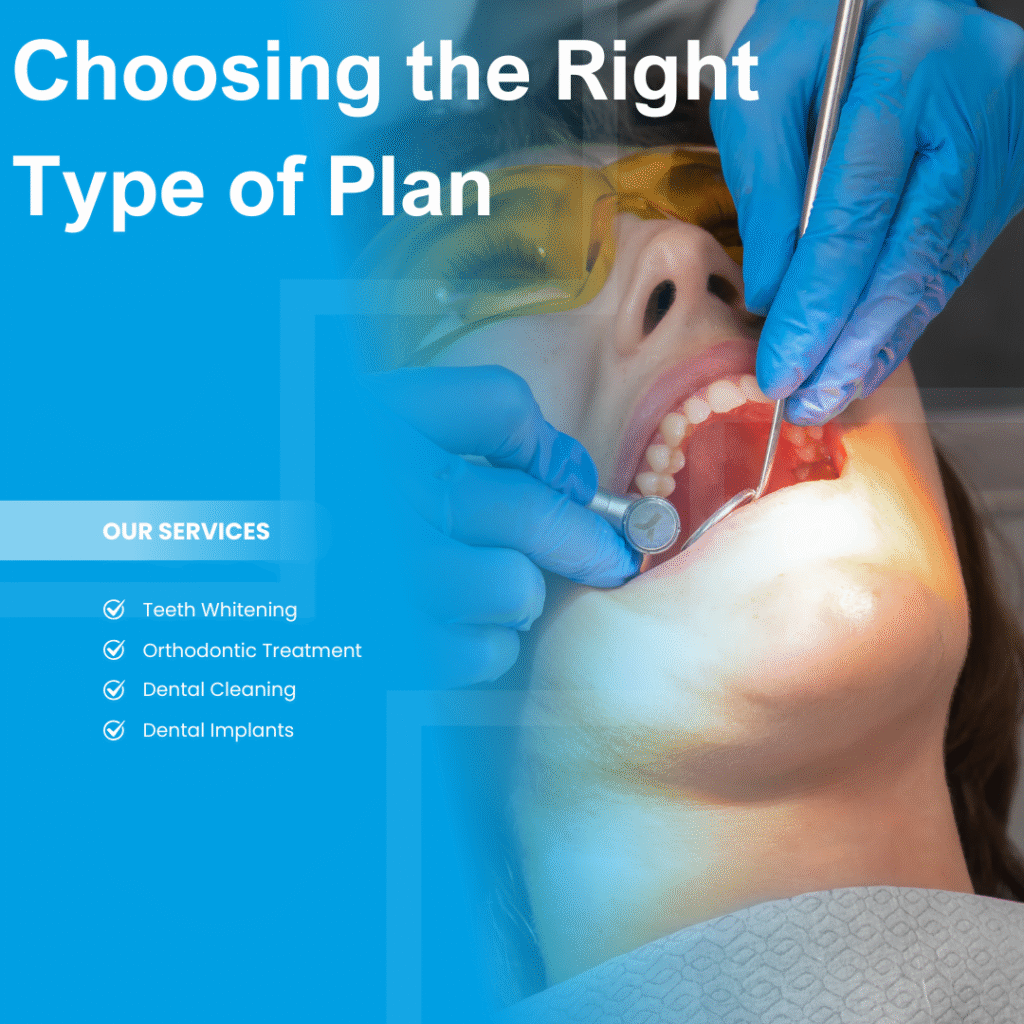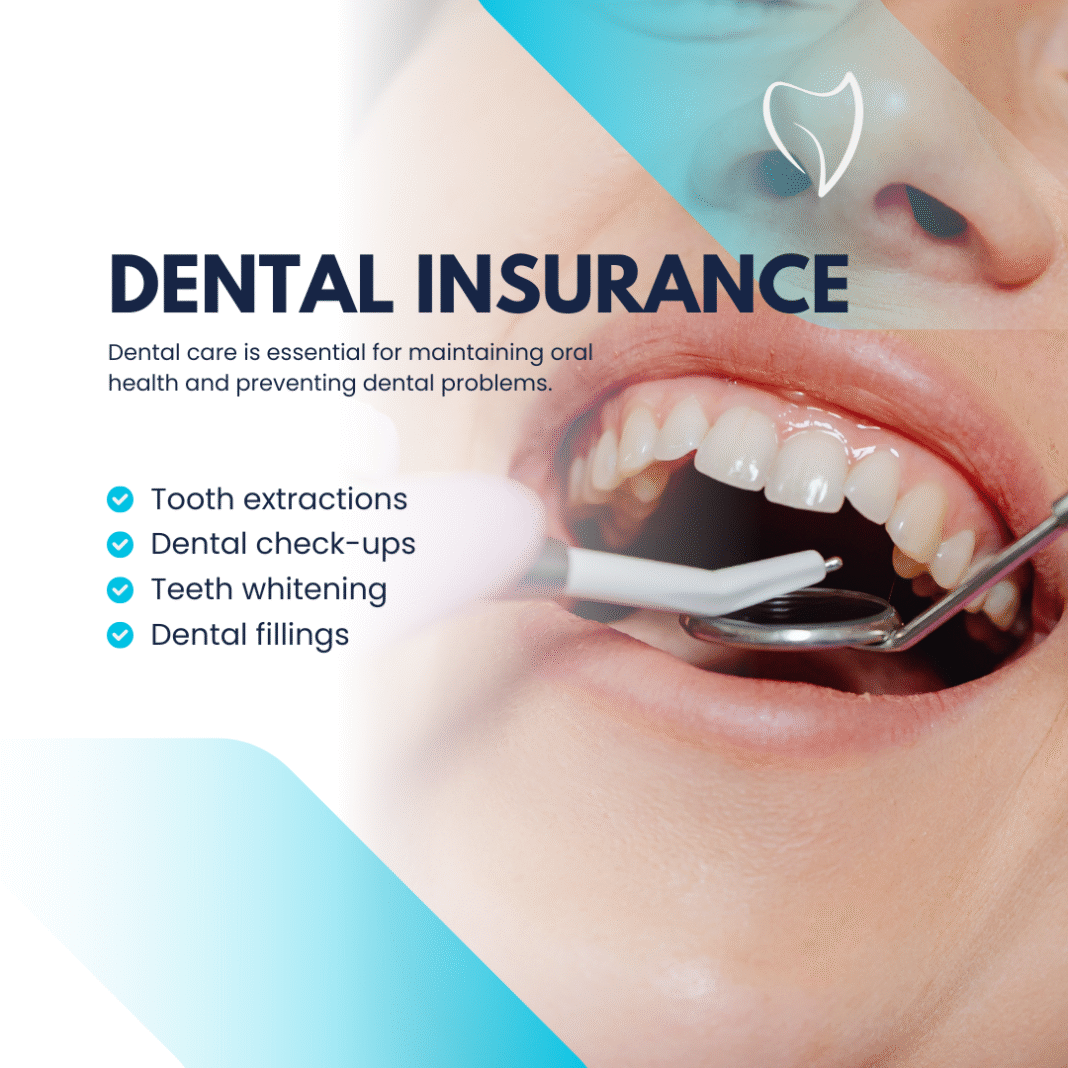Remember the last time you were at the dentist. Perhaps it was simply a routine cleaning, or you were advised that you needed a crown that was going to cost you over $1,000. At that moment, dental insurance isn’t just paperwork or fine print. It is the difference between walking out relieved or walking out worried about your wallet. And yet, here’s the surprising truth: even though more than 75% of Americans under 65 have dental insurance (CDC, 2023), many people don’t use it fully. They skip checkups, forget about annual maximums, and lose hundreds of dollars in unused benefits each year. This guide is here to change that.
We’ll walk through how dental insurance really works, share real-world examples of what gets covered (and what doesn’t), and show you strategies to squeeze the most value out of every dollar.
How Dental Insurance Actually Works
Most plans follow what’s called the 100-80-50 model. It sounds like a math formula, but really it’s a tiered way of splitting costs: preventive care is fully covered, basic care is partly covered, and major procedures are split down the middle.
Take a simple example. If you go in for a cleaning and X-rays typically about $120. You usually pay nothing out-of-pocket. But if you need a filling that costs $150, your plan will cover about $120 of it, and you’ll owe the remaining $30. Now if you move up to something major, like a crown costing $1,200, insurance may cover half leaving you with a $600 bill. That’s where people sometimes get frustrated. Dental insurance isn’t designed to wipe out every expense. Instead, it’s built around preventive care, with the goal of helping you catch problems early before they become big and expensive.
The Limits You Need to Know
One of the most overlooked parts of a plan is the annual maximum. This is the most your insurance will pay in a year, often between $1,000 and $1,500. Once you hit that cap, every dollar after that is on you.
Scenario: Maria, a teacher in Ohio, learned this the hard way. She had a crown and a filling done in June, which used up nearly all of her $1,200 maximum. By December, when she needed another crown, insurance covered nothing leaving her with the entire $1,288 bill. Then there’s the deductible, usually between $50 to $100 and coinsurance, which is the percentage you have to pay after insurance pays. These amounts may seem insignificant on their own, but collectively they add up to what you literally pay..
Choosing the Right Type of Plan
When it comes to dental insurance, one size doesn’t fit all.

A PPO plan gives you freedom. You can visit any dentist, even out-of-network, though you’ll save more if you stay within the network. The tradeoff is usually higher premiums, often around $30 to $50 a month. An HMO plan, on the other hand, keeps costs lower, sometimes just $15 to $25 a month but limits you to specific dentists. That can work well if you’re comfortable staying in-network and don’t need much flexibility. And then there are plans that reimburse you directly.
With these, you pay the dentist first, then file a claim to get your money back. It works fine if you can front the cost, but for big-ticket procedures, it can feel like a lot of cash flow pressure. The trick is to match the plan to your situation. If you already have a trusted dentist you don’t want to give up, make sure they’re in your plan’s network before signing anything.
The Small Print That Matters
Here’s where many people get caught: clauses buried in the policy.
Take the “missing tooth clause.” If you lost a tooth before enrolling, some plans won’t pay for an implant or bridge to replace it. Or look at the coordination of benefits rule if you have two plans, maybe through work and a spouse, the insurers decide how to split payments, and it doesn’t always mean you pay nothing. These facts aren’t portrayed in the shiny brochures, but they can mean all the difference between you getting the insurance when you need it most, and not.
How to Make the Most of Your Benefits
The most common mistake that people make is that they see a dentist when something is already hurting. Preventive care including twice a year checkups and cleanings are usually covered free based on nearly all plans. It is not only about clean teeth. It concerns being able to detect cavities, gum disease or other problems in their early stages, when they’re still cheap to heal.
Sarah is a busy mother, and she missed her checkups over the previous two years. When she returned it cost more than $1,200 to get a crown put on. She could have saved herself that invasive surgery had she not skipped past her routine cleanings and her dentist would have probably noticed the problem sooner. There’s also the “use it or lose it” factor. Dental benefits reset every year, and whatever you don’t use simply disappears. According to Forbes (2023), the average American leaves more than $300 in unused benefits each year.
That is pretty much money going to waste. Plan in advance, especially when you know you will require larger dental procedures, such as a few crowns or a root canal. Pay one procedure in December and the next one in January so that you can use two years of insurance benefit instead of using it all in a single year.
What to Ask Before You Enroll
Before you choose a plan, ask the right questions:
- What’s the annual maximum?
- Are implants or orthodontics covered?
- How long is the waiting period for major work?
- What happens if I go out-of-network?
- How does the plan handle emergencies?
These conversations can save you from surprise bills later. And don’t overlook where the plan comes from. Employer-sponsored plans are often cheaper, averaging $20 to $30 a month. Individual plans cost closer to $50 but they give flexibility if you’re self-employed or between jobs.
Real-World Examples of Coverage in Action
So let us see this in contrast. One patient had two cleanings, a filling, and a crown in a year. With insurance, they paid about $674 out-of-pocket. Without insurance, the same set of treatments would have cost over $1,650. That’s nearly a thousand dollars saved money that stayed in their pocket instead of going on a credit card. This is where dental insurance proves its worth. Even if you’re just using it for preventive care, the safety net for bigger procedures can mean a world of difference.
The Future of Dental Insurance
Dental insurance is slowly evolving. Employers are launching mobile applications to simplify coverage monitoring, electronic claims to expedite reimbursements, and combinations of dental, vision, and medical discounts. The system is gradually moving towards prevention, making patients ahead of problems rather than mending a costly channel and hence saving much money and health.
Conclusion: Don’t Leave Money Behind
The moral of this story is: dental insurance is not perfect, and at the same time, it works when it is applied. Regular checkups, careful timing of treatments, and attention to your annual limits, can save you hundreds, and even thousands of dollars yearly. Make sure your benefits are not wasted. Review your plan, make that appointment you haven been avoiding and see how much you can really save. And, not sure where to begin? Apply for a complimented dental insurance quote online, meet your local agent or get an insurance guiding advice at SecurePolicyNow. The most perfect smile is the most affordable one to save.
FAQs
Is dental insurance really worth it?
In most situations, dental insurance is worth the price even when you just want to utilize it in case of preventive visits such as cleanings and exams. The coverage is not only self-paying but also saves you big expenses by early detection of problems before they get expensive to be dealt with.
What’s the most common coverage limit?
The dental insurance policies have an annual limit of anywhere between 1,000 and 2,000 a year (ADA, 2023). Once you hit that cap, the rest of the expenses are on your side which is why it is important to schedule and plan big treatments accordingly..
Why didn’t my implant get covered?
In most situations, implants cannot be covered when the tooth is already missing prior to signing up to the plan. This is referred to as a missing tooth clause and it is a typical limitation and so it is always worth reading your policy before you sign up for treatment.
How much does dental insurance cost?
Employer sponsored plans on average cost between 20-30 dollars per month and hence they are affordable in regards to routine care. Individual plans on the other hand, are usually slightly higher at approximately 30-50 dollars a month (NADP, 2023) but again this can still save you a lot of money in case you need more than basic check ups.




